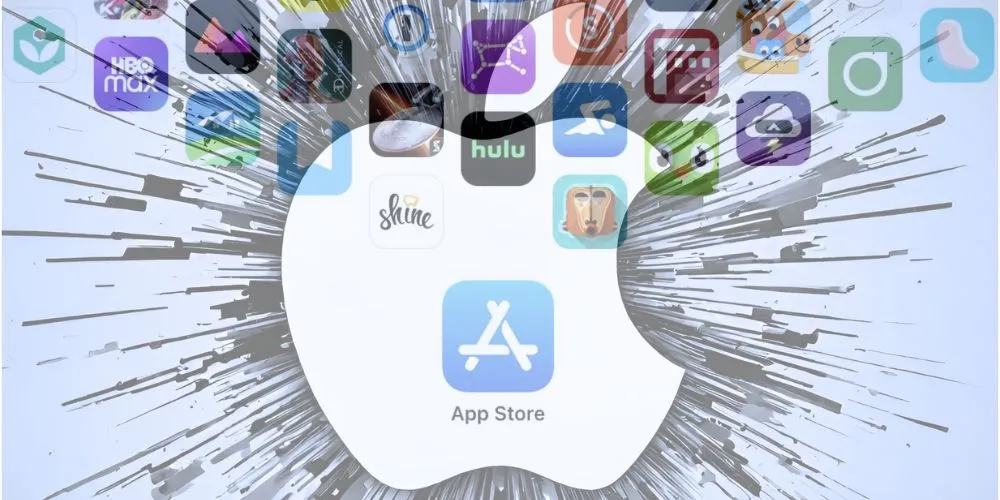The launch of the Apple App Store in 2008 was a landmark event that fundamentally transformed the mobile software industry. By providing a centralized platform for developers to distribute their applications, Apple changed how software was developed and consumed and established a thriving mobile app economy that continues to influence today’s tech landscape. This case study examines the background of the App Store, the strategic decisions leading to its launch, its impact on the mobile ecosystem, and the broader implications for developers, consumers, and competitors.
Background of the Mobile Software Industry
Before the App Store, the mobile software landscape was fragmented and challenging for developers and consumers.
Pre-App Store Landscape
A lack of standardization and accessibility characterized the mobile software market before 2008.
- Carrier-Controlled Distribution: Mobile applications were primarily distributed through mobile carriers, which controlled the distribution process. This often involved lengthy approval processes and limited access for developers.
- Diverse Platforms: Multiple operating systems, such as Symbian, BlackBerry OS, and Windows Mobile, created a complex developer environment. Each platform had its requirements, making it difficult to reach a broad audience.
The Rise of the iPhone
The introduction of the iPhone in 2007 set the stage for a revolutionary change in mobile computing.
- Touchscreen Interface: The iPhone’s intuitive touchscreen interface provided a new way for users to interact with mobile devices. This innovation sparked interest in developing applications leveraging the device’s capabilities.
- Open Development Philosophy: Apple’s decision to open the iPhone to third-party developers excited the developer community. However, the lack of an official distribution platform left developers seeking a reliable way to reach consumers.
The Decision to Launch the App Store
Recognizing the potential for a thriving application ecosystem, Apple launched the App Store in 2008.
Strategic Objectives
Several vital objectives guided Apple’s decision to create the App Store.
- Creating a Seamless Experience: Apple aimed to provide a seamless experience for users, allowing them to discover, download, and update applications effortlessly. The platform would be a one-stop shop for all mobile software needs.
- Empowering Developers: Apple sought to enable developers by offering a centralized platform, giving them the tools and resources to create and distribute applications. The App Store would provide a level playing field for developers of all sizes.
- Monetizing the Ecosystem: Apple recognized the opportunity to monetize the app ecosystem by implementing a revenue-sharing model. By taking a percentage of app sales and in-app purchases, Apple could generate significant revenue while supporting developers.
Development and Launch
The App Store was developed alongside iOS, Apple’s mobile operating system, and was designed to support third-party applications.
- Developer Kit: Apple released the iOS SDK (Software Development Kit) to developers, enabling them to create applications for the iPhone. This kit included tools, frameworks, and resources to simplify development.
- Launch Event: The App Store was launched on July 10, 2008, alongside the release of the iPhone 3G. Apple promoted the platform heavily, highlighting its extensive library of applications and the ease of use for consumers.
Impact on the Mobile App Economy
The launch of the App Store marked the beginning of a new era in the mobile app economy, with significant implications for developers, consumers, and the industry.
Revolutionizing App Distribution
The App Store fundamentally changed how applications were distributed and consumed.
- Accessibility: For the first time, developers could easily reach a global audience without relying on carriers or complex distribution channels. This accessibility empowered a diverse range of developers to create applications.
- Instant Updates: The App Store enabled developers to push updates directly to users, ensuring that applications could be improved and refined continuously. This feature enhanced user experience and engagement.
Economic Growth and Job Creation
The App Store catalyzed substantial economic growth and job creation within the tech industry.
- Developer Opportunities: The App Store created new opportunities for developers, leading to the emergence of thousands of app development companies and independent developers. Many developers found success and financial independence through their apps.
- Job Creation: The app economy created millions of jobs worldwide, spanning app development, marketing, design, and support. The ecosystem fostered a new generation of entrepreneurs and small businesses.
Consumer Behavior Changes
The App Store altered consumer behavior regarding how software was purchased and consumed.
- Shift to Mobile: The availability of diverse applications encouraged consumers to shift their attention from traditional software on PCs to mobile applications. This shift transformed how people interacted with technology in their daily lives.
- App-Based Economy: The App Store popularized the idea of app-based services, leading to the emergence of companies like Uber, Airbnb, and many others that relied on mobile applications to connect consumers with services.
Competitive Landscape
The success of the App Store prompted other tech companies to develop their app distribution platforms.
Competitors Emerge
Following the platform’s launch, competitors began to emerge, each seeking to capture a share of the growing mobile app market.
- Google Play Store: In response to the App Store’s success, Google launched the Play Store (formerly Android Market) for Android devices. This platform allowed developers to distribute applications to Android users, creating a competitive environment.
- Microsoft and Others: Microsoft also sought to enter the app economy with the Windows Phone Store, although it faced challenges in gaining traction in a competitive landscape dominated by iOS and Android.
The Rise of Cross-Platform Development
The competition among app stores led to the emergence of cross-platform development tools and frameworks.
- Development Frameworks: Developers sought to create applications that could run on multiple platforms without extensive rewriting. Frameworks like React Native and Flutter emerged to facilitate cross-platform development.
- Challenges and Opportunities: Cross-platform development offered advantages but introduced performance and user experience difficulties. Developers had to balance efficiency with wanting to provide a native feel on each platform.
Economic and Cultural Implications
The launch of the App Store had profound economic and cultural implications beyond the tech industry.
Shaping Modern Business Models
The App Store popularized several new business models within the software industry.
- Freemium Model: Many developers adopted the freemium model, offering free applications with optional in-app purchases. This approach allowed users to try apps before purchasing, enhancing user acquisition.
- Subscription Services: The App Store also facilitated the Rise of subscription-based services, allowing users to access premium features and content for a recurring fee. This model has become increasingly popular across various app categories.
Cultural Shift Towards Mobile Technology
The App Store contributed to a cultural shift toward mobile technology and its integration into daily life.
- App-Centric Culture: Society began to embrace an app-centric culture, where mobile applications became integral to communication, entertainment, productivity, and more. This cultural shift reshaped how people interacted with technology.
- Social Media and Connectivity: The App Store’s influence on social media applications, such as Facebook, Twitter, and Instagram, transformed how individuals connected and shared experiences. These platforms have become central to modern communication and social interaction.
Challenges and Controversies
Despite its success, the platform faced challenges and controversies that prompted scrutiny from developers, regulators, and consumers.
Developer Complaints
Many developers voiced concerns regarding Apple’s App Store policies and practices.
- App Store Review Process: The application review process was often criticized for being opaque and inconsistent. Developers expressed frustration over rejections without clear explanations, impacting their ability to launch and monetize their apps.
- Commission Fees: Apple’s commission structure, which typically took a 30% cut of app sales and in-app purchases, raised questions about fairness. Some developers argued that this model limited their profitability and stifled innovation.
Regulatory Scrutiny
The App Store’s dominance increased regulatory scrutiny from governments and antitrust authorities.
- Investigations: Various governments, including those in the European Union and the United States, launched investigations into Apple’s App Store practices. Regulators examined whether the commission structure and policies constituted anti-competitive behavior.
- Calls for Reform: Advocacy groups and developers called for reforms to create a more equitable app distribution ecosystem. These discussions prompted debates about the balance between protecting consumers and fostering a competitive developer environment.
The Future of the App Store
As the App Store continues to evolve, it faces new challenges and opportunities in an ever-changing technological landscape.
Innovations and Enhancements
Apple remains committed to enhancing the platform experience for developers and consumers.
- App Store Connect Improvements: Apple has introduced tools and resources to streamline the app submission and review process, aiming to reduce friction for developers while maintaining quality control.
- Augmented Reality and Emerging Technologies: With the growing interest in augmented reality (AR) and other emerging technologies, the App Store will likely evolve to support innovative applications that leverage these advancements.
Global Expansion
The App Store’s influence is expanding globally, with Apple seeking to capture emerging markets.
- Localized Content: Apple has tried to localize the App Store experience for various regions, offering tailored content and services to meet the unique needs of diverse markets.
- Supporting Local Developers: Initiatives to support local developers and foster entrepreneurship in emerging markets can potentially create a more varied app ecosystem.
Conclusion
The launch of the Apple App Store in 2008 marked a pivotal moment in the evolution of the mobile app economy. Apple revolutionized how software was developed, marketed, and consumed by providing a centralized platform for developers to distribute applications. The platform empowered developers, created economic opportunities, and reshaped consumer behavior and cultural norms regarding technology.
While the App Store has faced challenges and controversies over the years, its impact on the tech industry is undeniable. As the app economy grows and evolves, the lessons learned from the App Store’s journey will continue to shape the future of software development, distribution, and consumer engagement in the digital age. Apple’s ongoing commitment to innovation and adaptability will be crucial in navigating the challenges and opportunities in this dynamic landscape.












